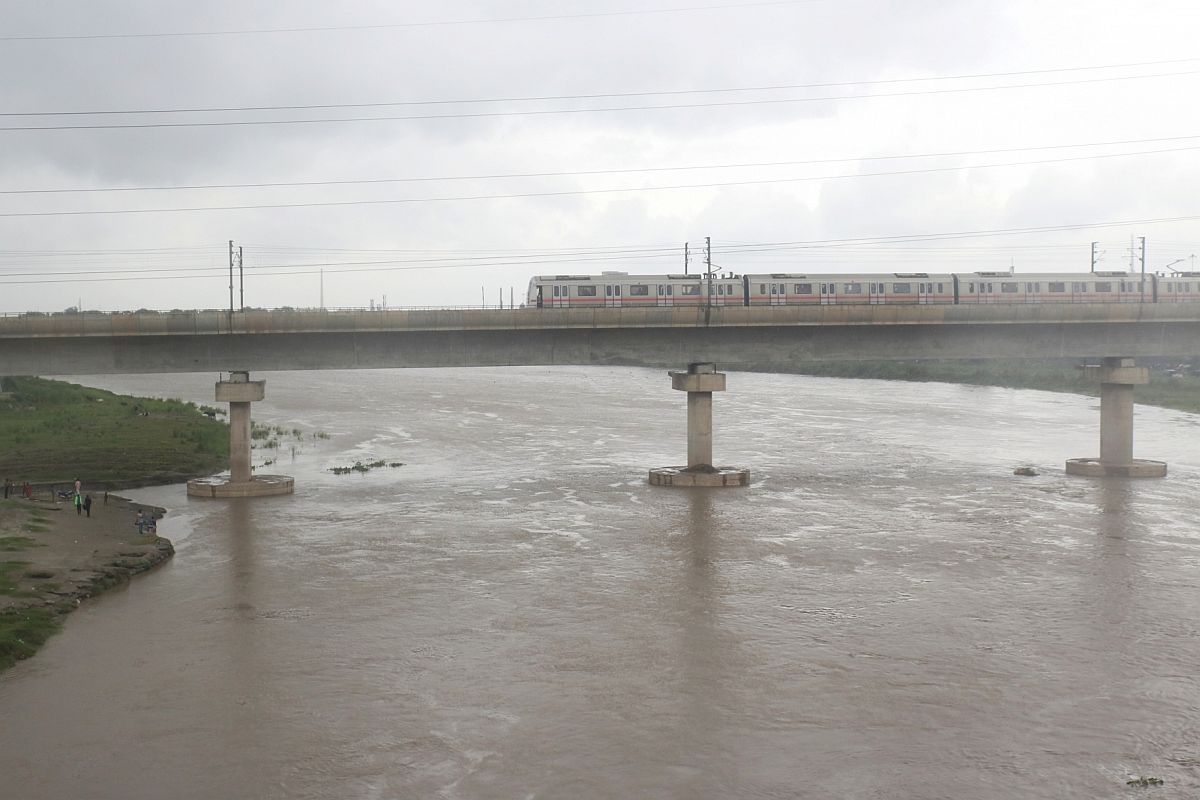Nirankari mission begins Clean Water, Clean Mind Project at Yamuna
“Water is a gift from God, we must preserve this nectar,” says Satguru Mata Sudiksha Ji.
There can be no sabka vikas if sabka sath does not prove the guiding light.

Yamuna river (Photo: IANS)
In the context of the devastation across the country in recent weeks that caption might appear downright idiotic, yet it is not inaccurate. For in the National Capital some water-management experts of both the central and state governments are anxiously awaiting a flood wave to sweep through the Yamuna ~ to authenticate a novel experiment to utilise the bounty of the monsoon to recharge the dwindling ground-water resources of the river-bed and its environs.
It may not quite add up to answering the ever-nagging paradox of floods in one area and drought in an adjoining region, but it does attempt to address the matter by seeking to try and “trap” some flood water rather than let it flow waste. As significant as the effort “on the ground” is that it is one of the very few joint initiatives of the central and state governments to rise above bitter political differences to tackle a problem: hopefully even limited success will encourage the swollen heads on both sides to “cool it” and pool their capabilities in the larger interests of the common folk. Many of the NCT’s difficulties would be eased if false prestige was exorcised from the continuing confrontationist equation. Local politicians are, customarily, small-minded ~ alas the Centre has its share of pettiness too.
There can be no sabka vikas if sabka sath does not prove the guiding light.
Advertisement
The water-conservation bid is simple enough. In the initial phase a 40-acre shallow pit, about one metre deep, has been dug near Palla ~ upstream of the pollution-laden drains that reduce the river to an open sewer as its flows through the built-up areas.
The vegetation and top soil has been removed so that the sandy base of the man-made pond is exposed. The hope is that the flood water trapped in the pond will percolate quickly and the reservoir of underground water gets re-charged.
Sensors have been installed to monitor the rate of percolation. It has been estimated that scope exists for at least 1000 acres of “pondage” so the potential for floodwater trapping is promising.
The Yamuna tends to witness four or five flood waves between mid August and October each year so fingers are, proverbially crossed, though reports from the Yamuna’s catchment areas speak of only moderate rainfall this monsoon ~ there are still a few weeks to go. It is a pity that the “experiment” has not been backed by a determined bid to promote rainwater harvesting in the city where the central government owns large office and residential complexes: it should set the example.
Municipal agencies will also have to regulate the use of tube wells and crack down on the menace of electric pumps being fitted directly on water lines. Time was when a high water table militated against high-rise construction ~ the ministry of urban affairs, call it by any of its previous names if you prefer, has clearly been caught napping.
Advertisement